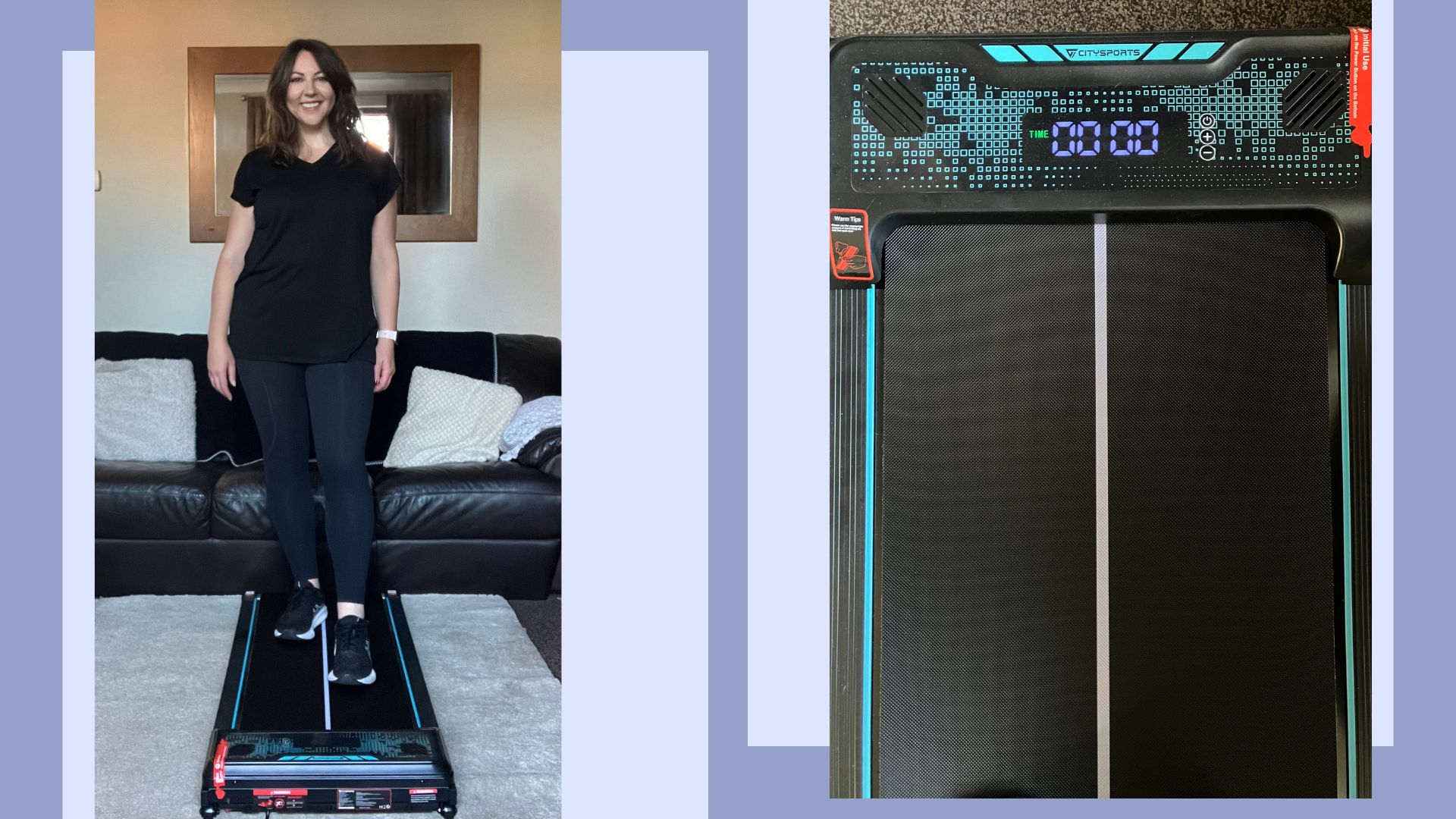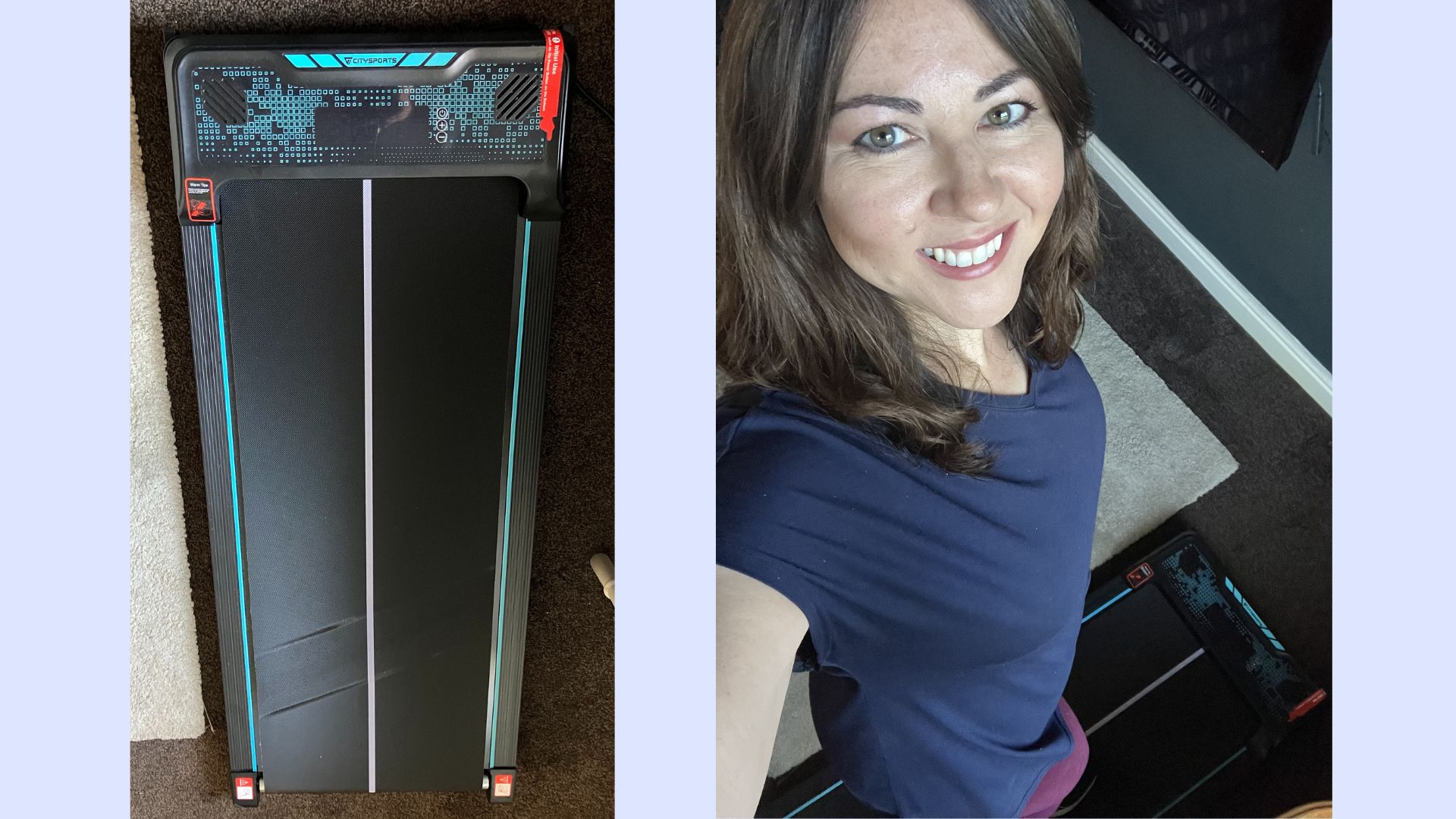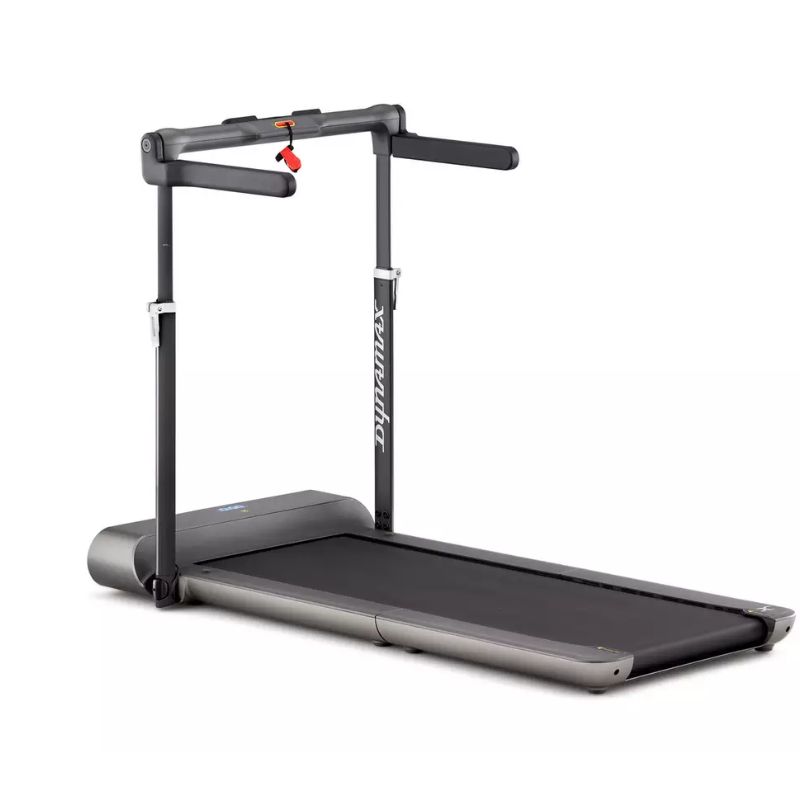Are walking pads worth it? I swapped my outdoor walks for treadmill strolls for 3 weeks to find out
I'll admit it - I was sceptical at first, but I couldn't help but wonder whether these small walking treadmills were worth trying to get my steps in at home


While I always prefer fresh air to an indoor workout, seeing videos of countless women walking their way to 10,000 steps from the comfort of their own homes made me wonder, are walking pads worth it?
I was sceptical at first. As a hiking devotee, there's nothing better than getting out in the hills in my best walking shoes every day, soaking up the sights and sounds of nature and allowing the elements to induce a content, if feral-like, state. Hiking calms my mind, eases stress, helps me think more clearly, and works up a sweat without thinking of it as exercise.
Yet, 10 minutes into trying a walking pad for the first time, and I had the sudden urge to attempt my best catwalk strut on my early morning walk.

The Citysports under-desk treadmill offers speeds from 1km/h to 6km/h and has an LED display that tracks your workouts in real time, offering time, speed, and distance stats. It also predicts the calories you've burnt. It has a small remote to help you control the machine easily and shock absorption technology in the pad to help you move quietly.
Are walking pads worth it?
Was it the most scintillating walk I'd ever been on? No. But over the three weeks, I found my walking pad to be a convenient way to get 10,000 steps in without leaving the house, multitask with my work, and ease stress through movement.
A walking pad is a small treadmill designed to help you get your steps in from the comfort of your own home. Slimmer and less cumbersome than the type of treadmill you find in a gym, a walking pad is designed to be packed up and folded away when not in use, making it suitable for smaller spaces.
A walking pad can be positioned in your bedroom, sitting room, or office, under your desk, by your bed, or in front of the TV. Some also come with handles or mini desks attached, while others offer an incline and an opportunity to run on them as well.
Benefits of using a walking pad
1. Walking pads are easy to set up
The Citysports Treadmill(£199.99 on Amazon), which I used for my three-week trial, was just the right size for my small terraced house - and it could not have been easier to set up. I plugged it in, flicked the pad switch, and was ready to go in minutes. Though, at 17kg, you may want help to unpack the box.
Sign up for the woman&home newsletter
Sign up to our free daily email for the latest royal and entertainment news, interesting opinion, expert advice on styling and beauty trends, and no-nonsense guides to the health and wellness questions you want answered.
To start the treadmill, you press the button on a small remote, which you wear around your wrist so you can access controls at all times. Three beeps sound before the treadmill begins moving slowly. You then use the remote to adjust the speed and to stop it.
Although this treadmill reaches 6km per hour, I found a comfortable range with 3.5km to 4.5km per hour.
It was also impressively quiet. I did not have to shout over it and it did not disrupt anyone else, even on higher settings.
2. You don't have to leave the house to get your steps in
The great appeal of a walking pad is that you don't have to leave the house to get your steps in. I fit my steps in on the walking pad before breakfast, while waiting for a delivery in the afternoon, watching television in the evening, and chatting to friends and family on the phone.
The shortest walk was while I waited for the kettle to boil, and the longest was while watching an episode of Bridgerton.

Walking pads are compact and foldable, making them easy to store when not in use.
3. Forces you to take a break when busy
I found the walking pad particularly useful on busier days, however. Being a keen hiker, I try to hike every day, but sometimes even walking for 30 minutes a day isn't possible - let alone anything longer. Having the walking pad there helped me get my steps in even when I was too busy to take a break real break.
Intermittently spending five or 10 minutes on the walking pad between tasks (also known as exercise snacking) also meant I hadn’t seized up by the time I shut my laptop.
Walking pads have grown in popularity in recent years - no doubt prompted by the cosy cardio trend (also known as low-intensity interval training), the vast number of people working from home (surveys suggest 81% of us spend at least four hours sitting down when wfh), and the impact of social media. #Walkingpad has an impressive 32K posts on TikTok alone, with thousands of people of all ages taking on this convenient, cost-effective, and accessible form of exercise.
"They are a great tool if you're stationary for most of the day or have an office job and have to be at a desk, as they can help you incorporate more movement into your day," says Georgie Spurling, an experienced PT and founder of wellness app ARVRA.
4. Walking is a type of LISS exercise
"Walking is a fantastic, accessible form of LISS (low impact steady state) exercise, so it offers benefits of strength and cardiovascular training by getting your heart rate up and kick-starting the lymphatic system," says Spurling.
"At the same time, it offers minimal injury risk, gentle on your joints and your stress hormones,” she adds. A recent world-first study by Macquarie University also revealed walking for lower back pain can be hugely beneficial.
It's a great way to slow down your mind and boost your mood too, she notes. "Even a daily 15-minute walk can be extremely beneficial. Listen to soothing music as you walk or try walking meditation to better deal with stress."
5. Burn calories
It didn't take long to see how you could take up walking for weight loss with a walking pad. All the small walking sessions quickly started to add up where calorie burn was concerned.
For example, in 20 minutes I averaged 2,134 steps (124 calories) and 4,538 steps (261 calories) in 45 minutes.
For me, the chance to be more mobile throughout the day was more beneficial than the potential calorie burn - but if you do want to lose weight without exercise in more intensive forms, it's something to consider.

Susan spent as little as 5 minutes using her walking pad to get steps in throughout the day.
Disadvantages of using a walking pad
Multi-tasking not suitable for everyone
The walking pad I tried did not come with a handle, which is something to consider as a safety precaution if you are not confident about your balance.
Also, while I credit those who can multitask on their walking pad, I couldn't manage it. This is only a disadvantage if you plan to combine working and walking, however.
If you're not used to working out on an exercise machine, like a treadmill or indoor cycling equipment, it can get monotonous. I recommend organising a distraction that doesn’t require too much brain power - like watching television or speaking to someone on the phone.
You're missing out on other walking benefits
For me, the greatest disadvantage of the walking pad is that it doesn't offer the same physical and mental benefits as walking outdoors, and Spurling agrees. "Mentally, you're missing out on the benefits of green and blue space, fresh air, and vitamin D, as well as time away from a screen," she says.
“When you walk outside the ground is uneven, which tests your stability and activates your core muscles, which you don’t get when walking on a flat treadmill. Yes, [the walking pad is] exercise, but you’re not reaping all the benefits compared to walking outside, so I suggest using it as a tool if you are stationary."
I agree, completely. A walking pad is a handy way to remain active when you might otherwise remain sedentary, but it is not a substitute for the holistic benefits of walking in nature if you have access to them instead.

The Citysports under-desk treadmill is the one Susan used during her three-week trial - with great success. It's suitable for all types of walking with speeds of up to 6km/h, comes with a small remote to change the speed easily, a shock-absorbing pad to reduce noise, and stats on the LED screen.

The Dynamax RunningPad Folding Treadmill offers running and walking options with speeds from 1km/h to 9 km/h. Handrails unfold seamlessly, offering support for your workout and space over the top for a desk should you want to try and multi-task.

If you want to give multi-tasking a go with your walking pad, you'll need a standing desk. This one from SANODESK is electric with an easy-control button and can be used seated or standing, with a memory function to record your preferred heights for ultimate versatility.
A journalist with two decades of experience, Susan interviewed A-list names in film and TV before going freelance and focusing on health, wellbeing, and lifestyle features. She has since spoken to world-renowned experts on the most innovative and effective ways to look after your mind and body; her work appearing in publications such as Daily Express, Daily Mirror, Metro, Fabulous and The Telegraph. When Susan isn’t working on her laptop, she is most content hiking in the Peak District or finding quiet camping spots to while away a weekend and knows first-hand the restorative benefits of being outdoors.
-
 Princess Eugenie gives knitwear a spring makeover with short sleeved jumper and satin skirt at poignant London visit
Princess Eugenie gives knitwear a spring makeover with short sleeved jumper and satin skirt at poignant London visitPrincess Eugenie isn’t a working member of the Royal Family, but she’s a dedicated Patron of several vital charities and organisations.
By Emma Shacklock
-
 Is your hair in need of some TLC? The secret to Elizabeth Hurley's luscious, glossy locks is this surprising DIY hair mask
Is your hair in need of some TLC? The secret to Elizabeth Hurley's luscious, glossy locks is this surprising DIY hair maskSpoiler: the trick involves combining an indulgent conditioner with a kitchen staple...
By Sennen Prickett